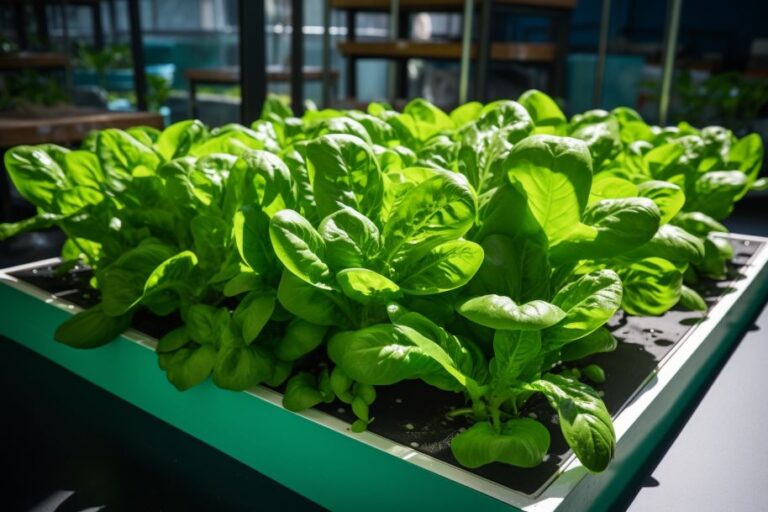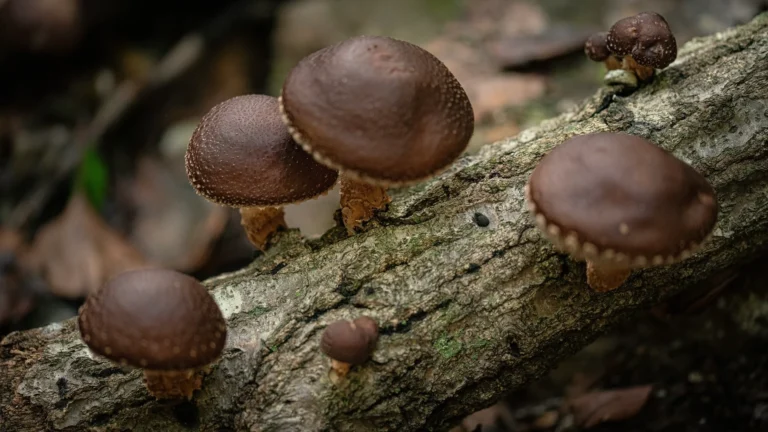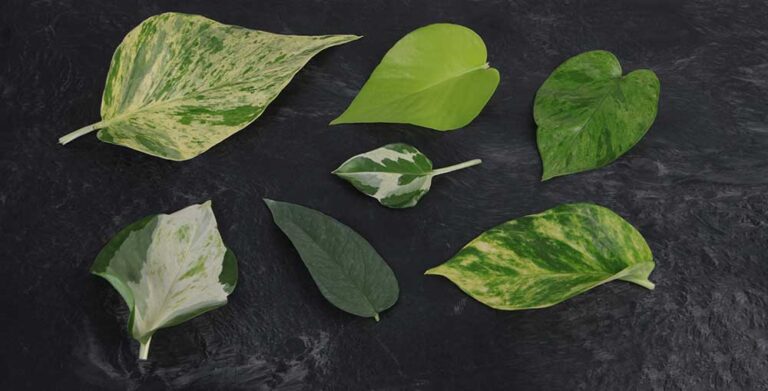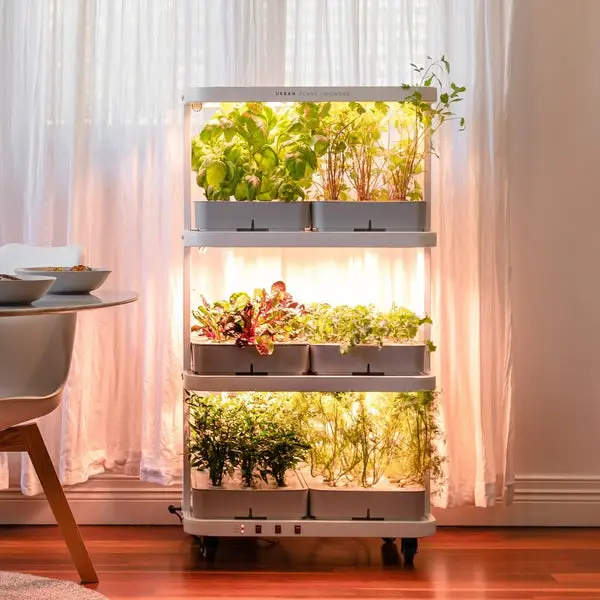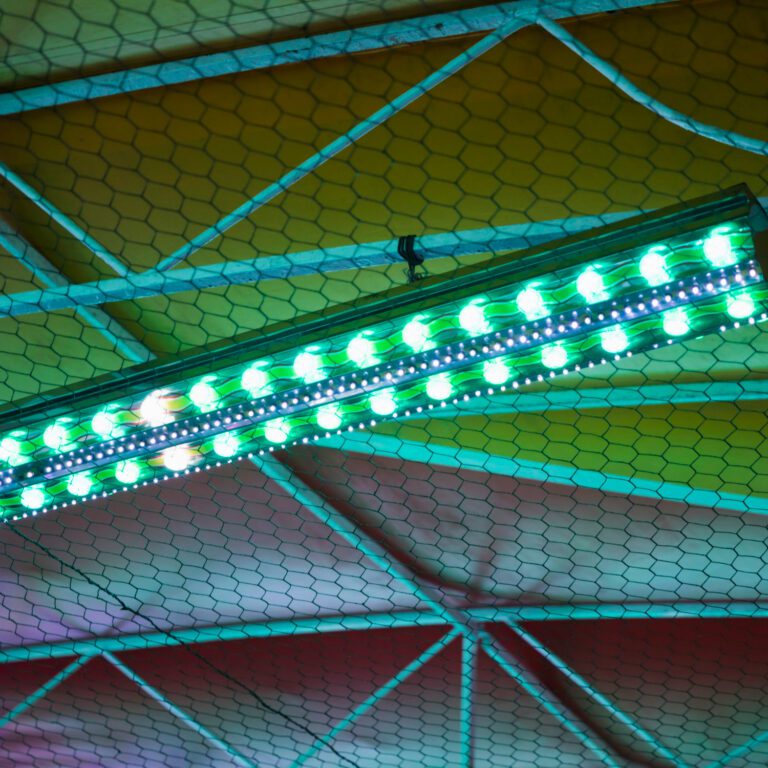An Insight into Indoor Grow Lights Technology
Table of Contents
Understanding the Importance of Indoor Grow Lights in Horticulture
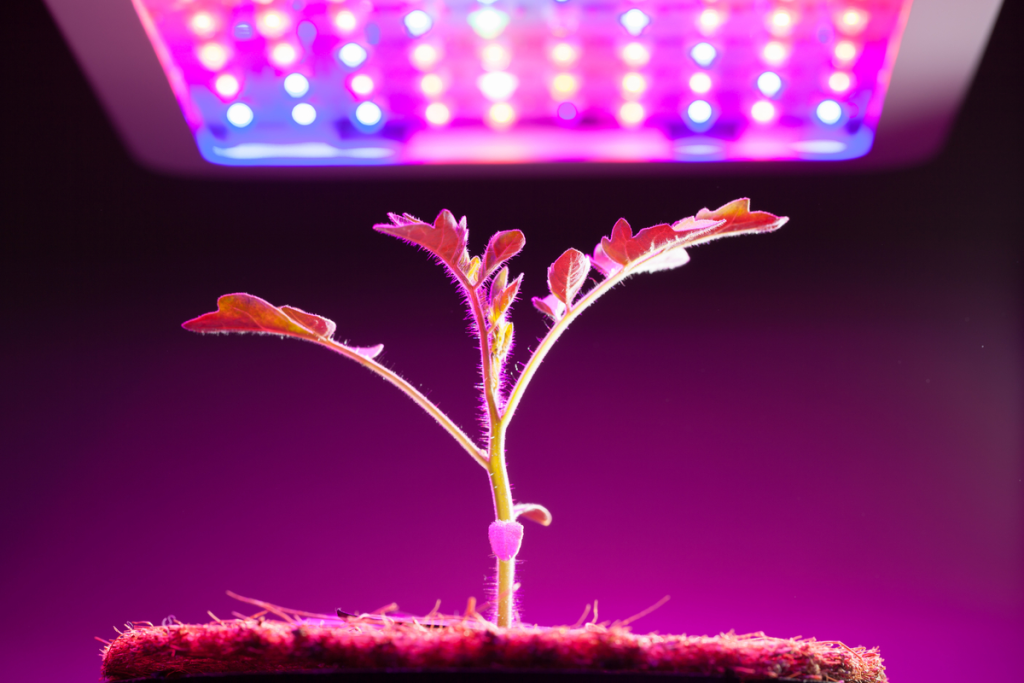
Indoor grow lights play a crucial role in the field of horticulture, offering a solution for year-round cultivation, regardless of the external conditions. These artificial lights have revolutionized the way we grow plants, allowing growers to create a controlled environment that caters to the specific needs of different crops. By providing the necessary light spectrum, intensity, and duration, indoor grow lights help plants carry out photosynthesis and promote healthy growth.
One frequently asked question is, “Why are indoor grow lights necessary when we have natural sunlight?” While sunlight is essential for outdoor plant growth, it may not always be sufficient or consistent for indoor cultivation. Factors like season, geographic location, and limited space can make it challenging to provide optimal light conditions indoors. Grow lights address these limitations by acting as a supplemental light source, ensuring that plants receive the right amount of light required for photosynthesis, even in the absence of natural sunlight.
The Science Behind Indoor Grow Lights: How They Work
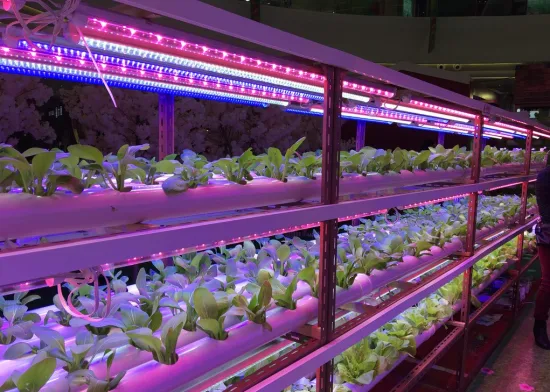
Indoor grow lights play a crucial role in horticulture by providing plants with the light they need for photosynthesis. But how exactly do these lights work? Well, it all comes down to the principles of electromagnetic radiation.
Indoor grow lights emit light in various wavelengths that are essential for plant growth. The most common types of grow lights are fluorescent and LED lights. Fluorescent lights work by passing an electrical current through a gas-filled tube, which then produces ultraviolet light. This ultraviolet light is then converted into visible light through a phosphor coating on the inside of the tube. On the other hand, LED lights work by passing an electrical current through a semiconductor, which emits light in a specific wavelength. LED lights are known for their energy efficiency and longevity.
In summary, indoor grow lights harness electromagnetic radiation to provide plants with the light they need for photosynthesis. Whether it’s fluorescent or LED lights, understanding how these lights work is essential for creating the optimal environment for indoor plant cultivation.
Different Types of Indoor Grow Lights and Their Benefits
Indoor horticulture has witnessed a significant boom in recent years, owing to the advancements made in grow light technology. Different types of indoor grow lights have emerged as an essential tool in ensuring the healthy growth and development of plants. Among the most popular options available in the market are LED grow lights and fluorescent grow lights.
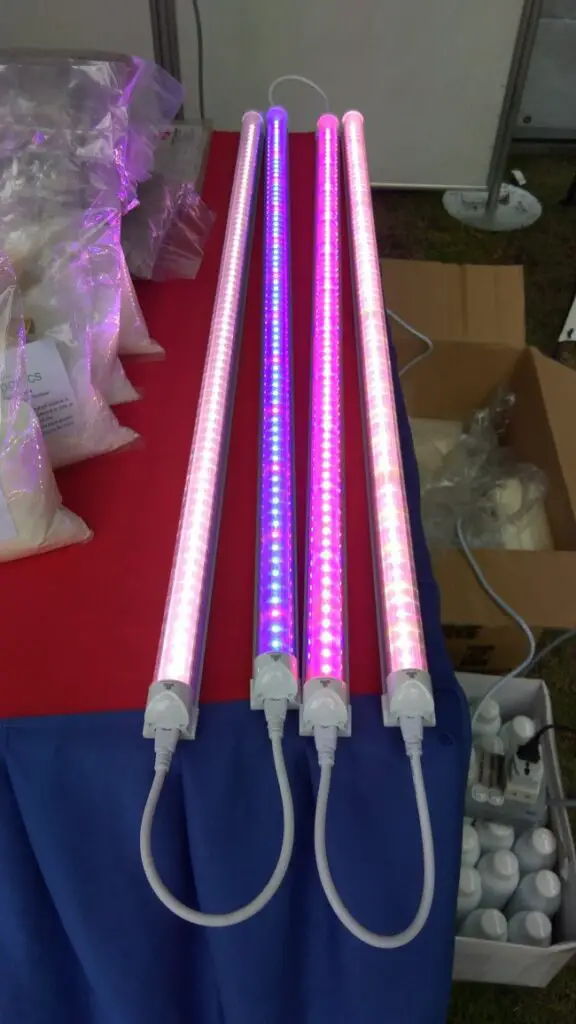
LED grow lights have gained immense popularity due to their durability, energy efficiency, and long lifespan. Unlike fluorescent grow lights, LED lights emit a specific light spectrum that can be tailored to meet the specific needs of different plants at various stages of growth. LED grow lights also produce very little heat, reducing the risk of heat damage to plants and allowing for closer proximity to achieve optimal light intensity. On the other hand, fluorescent grow lights are known for their affordability and versatility. These lights are ideal for providing supplemental lighting in small indoor gardens and can be used in conjunction with other light sources. Fluorescent lights are especially beneficial for plants requiring lower light intensity, such as herbs and leafy greens.
Choosing the Right Indoor Grow Lights for Your Plants
When it comes to choosing the right indoor grow lights for your plants, there are several factors to consider. One of the most important factors is the type of plants you are cultivating. Different plants have different light requirements, and it is essential to match the grow lights to these specific needs. For example, high-light plants such as tomatoes and peppers will benefit from high intensity discharge (HID) lights, while low-light plants like leafy greens and herbs can thrive under fluorescent lights.
Another crucial factor to consider is the size of your indoor garden. The size of your garden will determine the number and wattage of grow lights you need. It is recommended to have at least 30 watts of light per square foot for high-light plants and 20 watts per square foot for low-light plants. It is essential to ensure proper light coverage and distribution throughout your garden to promote healthy growth and avoid shadowing.
To further assist you in choosing the right grow lights, here are some unique frequently asked questions (FAQs) based on information not previously discussed in this article:
1. Can I use regular household LED lights for my indoor garden?
While regular household LED lights may emit light, they are not designed to provide the specific light spectrum and intensity required for optimal plant growth. It is recommended to invest in specialized LED grow lights that are specifically engineered for horticulture to ensure the best results for your plants.
2. Do grow lights emit heat? Will it affect the temperature in my indoor garden?
Yes, most grow lights, especially HID lights, emit heat. It is important to monitor and manage the temperature in your indoor garden to avoid heat stress on your plants. Consider using exhaust fans or cooling systems to maintain ideal temperature levels and prevent any adverse effects on your plants’ health and growth.
Comparing LED Grow Lights vs. Fluorescent Grow Lights: Which is Better?
LED (Light Emitting Diode) and fluorescent grow lights are both popular choices for indoor horticulture, but determining which one is better depends on various factors. LED lights have gained popularity in recent years due to their energy efficiency, long lifespan, and customizable spectrum. LED lights emit light in specific wavelengths that can be tailored to meet the specific needs of different plants at different growth stages. This ability to adjust the light spectrum can promote healthier growth and higher yields. Additionally, LED lights generate very little heat, reducing the risk of overheating and burning plants.
On the other hand, fluorescent lights have been used for indoor gardening for decades and continue to be a reliable option. They are affordable, widely available, and have a broad spectrum that closely resembles natural sunlight. Fluorescent lights are also effective for seedlings and young plants that require lower light intensity. However, they are less energy-efficient than LED lights and have a shorter lifespan, often needing to be replaced more frequently.
Ultimately, determining which type of grow light is better depends on individual needs and preferences. LED lights are a more advanced and customizable option, offering greater control over light spectrum and energy consumption. On the other hand, fluorescent lights are a more budget-friendly choice that works well for starting seeds and growing leafy greens. It is important to carefully consider factors such as plant species, growth stage, budget, and desired outcomes when deciding between LED and fluorescent grow lights.
Comparison: LED Grow Lights vs. Fluorescent Grow Lights
| Aspect | LED Grow Lights | Fluorescent Grow Lights |
|---|---|---|
| Energy Efficiency | – Highly energy-efficient, converting a high percentage of energy into usable light. | – Energy-efficient but less than LEDs. Some energy is lost as heat. |
| Spectrum Control | – Easily customizable spectrum with various color options to match different growth stages. | – Limited spectrum control, usually skewed towards blue and red wavelengths. |
| Light Intensity | – Higher light intensity, suitable for various plant types and growth stages. | – Moderate to low light intensity, better for low-light plants or seedlings. |
| Heat Emission | – Generates minimal heat, reducing the need for additional cooling systems. | – Produces more heat, requiring adequate ventilation and cooling. |
| Lifespan | – Longer lifespan, typically over 50,000 hours of continuous use. | – Shorter lifespan, around 10,000 to 20,000 hours. Replacement bulbs needed. |
| Initial Cost | – Higher initial cost, but cost-effective over the long term due to energy efficiency and lifespan. | – Lower initial cost but may incur higher energy expenses and bulb replacements. |
| Durability | – Solid-state construction, resistant to vibrations and impacts. | – Glass tubes are fragile and susceptible to breakage. |
| Size and Form Factor | – Compact and versatile design, suitable for various setups and configurations. | – Bulky and may require more space, limiting flexibility in installation. |
| Environmental Impact | – Low environmental impact, containing no hazardous materials like mercury. | – Contains small amounts of mercury, requiring proper disposal methods. |
| Light Penetration | – Better light penetration, reaching deeper into the canopy. | – Limited penetration, better suited for shorter plants or lower canopy levels. |
| Growing Area Coverage | – Can cover a larger growing area due to higher light intensity. | – Suitable for smaller growing areas or as supplementary lighting. |
Exploring the Spectrum: Understanding the Different Light Colors for Plant Growth
PARAGRAPH 1:
The spectrum of light plays a crucial role in plant growth and development. Different colors within the light spectrum have varying effects on plants, influencing their physiological processes. For instance, blue light is essential for promoting vegetative growth and is often used during the early stages of plant cultivation. It triggers a response that encourages compact and sturdy plant growth. On the other hand, red light stimulates flowering and is commonly employed during the flowering stage. By providing the appropriate light color at different growth stages, growers can optimize plant growth and achieve desired outcomes. However, it is important to note that the optimal spectrum and duration of light exposure vary depending on the type of plant being grown.
PARAGRAPH 2:
A frequently asked question regarding light colors for plant growth is whether green light is beneficial for plants. Unlike blue and red light, which are readily absorbed by plant pigments, green light is reflected and not absorbed by chlorophyll. Although plants do not actively utilize green light for their photosynthetic processes, some studies suggest that a small amount of green light can contribute to overall plant health and quality. Green light can penetrate deeper into the canopy, reaching lower leaves and stimulating photosynthesis in those areas. Additionally, incorporating green light in the growth spectrum can help balance the overall light quality, contributing to improved plant morphology and aesthetic appeal. Therefore, while green light may not be essential, including a low amount of green light in the spectrum can have potential benefits for indoor plant cultivation.
The Role of Light Intensity and Duration in Indoor Plant Growth
Indoor plant growth is heavily influenced by two key factors – light intensity and duration. The intensity refers to the strength or brightness of the light source, while duration refers to the length of time that plants are exposed to light. Both of these factors play a crucial role in determining the growth and development of indoor plants.
Light intensity directly affects the rate of photosynthesis in plants. Photosynthesis is the process through which plants convert light energy into chemical energy, which they use for growth and development. When the light intensity is too low, plants may not receive enough energy to carry out this process effectively. On the other hand, excessive light intensity can lead to heat stress and damage the plant’s foliage. Therefore, finding the right balance of light intensity is crucial for optimal plant growth indoors.
Similarly, the duration of light exposure is essential for plant growth. Different plants have varying requirements for the length of their light cycle. In general, most indoor plants require about 12-16 hours of light per day to thrive. This gives them enough time to carry out photosynthesis and other essential biological processes. However, it’s important to note that some plants may have specific light duration requirements depending on their natural habitat or growth stage. Understanding and providing the appropriate duration of light exposure can promote healthy growth and maximize the potential of indoor plants.
Maximizing Energy Efficiency with Indoor LED Grow Lights
Indoor LED grow lights have revolutionized the world of horticulture by offering unmatched energy efficiency. Their ability to convert a higher percentage of electricity into usable light makes them a popular choice among plant enthusiasts looking to maximize their energy savings. Compared to traditional fluorescent lights, LED grow lights consume significantly less electricity to produce the same amount of light, resulting in lower energy bills and reduced environmental impact.
One commonly asked question about LED grow lights is whether they produce excess heat like other lighting options. The answer is no. LED grow lights are designed with heat sinks and other cooling mechanisms to dissipate any heat generated by the diodes. This not only prevents damage to the plants but also eliminates the need for additional cooling systems, further enhancing their energy efficiency. Additionally, the longevity of LED grow lights ensures that they require less frequent replacement, reducing both the cost and environmental burden associated with maintenance.
The Impact of Indoor Grow Lights on Plant Morphology and Development
Indoor grow lights have a significant impact on the morphology and development of plants. These artificial light sources play a crucial role in determining the growth patterns, size, and overall structure of plants grown indoors. By providing plants with the right spectrum and intensity of light, indoor grow lights can mimic natural sunlight and stimulate plant growth.
One common question that arises is whether indoor grow lights can affect the flowering and fruiting stages of plants. The answer is yes. By carefully selecting the appropriate light spectrum and duration, indoor growers can manipulate the plant’s physiology and trigger flowering and fruiting. This can be particularly useful for growers who wish to control the timing of their harvest or extend the growing season. Furthermore, some indoor grow lights have the ability to adjust light intensity according to the stage of plant development, further enhancing the plant’s ability to produce flowers and fruits.
Another frequently asked question relates to the impact of indoor grow lights on the overall shape and appearance of plants. Indoor grow lights, when properly utilized, can promote compact, bushy growth by providing uniform light distribution. This is especially beneficial for plants that tend to stretch or become leggy when grown in low light conditions. By strategically placing the grow lights and adjusting their intensity, growers can encourage plants to produce more lateral branches, resulting in bushier and more aesthetically pleasing plants. Additionally, indoor grow lights can influence the leaf morphology of plants, leading to variations in leaf size, shape, and pigmentation.
Overcoming Common Challenges in Indoor Plant Cultivation with Grow Lights
One common challenge faced by indoor plant cultivators is the issue of heat generated by grow lights. High-intensity lights can produce significant amounts of heat, which could potentially damage or even kill the plants if not properly managed. To overcome this challenge, it is crucial to ensure proper ventilation and airflow in the growing area. This can be achieved by installing fans or exhaust systems to remove hot air and bring in fresh air. Additionally, using LED grow lights instead of traditional HID lights can help mitigate the heat issue, as LEDs produce less heat while providing the same or even better light intensity for plant growth.
Another challenge often encountered in indoor plant cultivation with grow lights is the possibility of over or underexposing the plants to light. Too much or too little light can negatively affect plant growth and development. To address this challenge, it is essential to understand the light requirements of different plant species and adjust the light intensity accordingly. This can be achieved by positioning the grow lights at the optimal distance from the plants or using light dimmers to control the light output. Regular monitoring of the plants’ response to light and adjusting accordingly is also crucial for overcoming this challenge and ensuring healthy and robust growth.
Achieving Optimal Light Distribution in Indoor Gardens
To achieve optimal light distribution in indoor gardens, it is important to strategically place and position the grow lights. This ensures that every plant in the garden receives adequate light for photosynthesis and growth. One common approach is to use multiple light fixtures placed at different heights and angles. This helps to minimize shadows and ensure that light reaches all parts of the plants. By carefully positioning the grow lights, you can provide consistent and uniform light distribution to promote healthy growth and maximize yield.
Another factor to consider for optimal light distribution is the type of reflectors used in the grow lights. Reflectors play a crucial role in redirecting the light towards the plants and minimizing wasted light. By choosing high-quality reflectors, you can enhance light penetration and distribution within the garden. Reflectors with a wide angle or adjustable settings are particularly useful in indoor gardens as they allow you to customize the light distribution based on the specific requirements of your plants.
FAQs:
Q: Can I achieve optimal light distribution with just one grow light fixture?
A: While it is possible to achieve some level of light distribution with a single fixture, using multiple fixtures is generally recommended for more uniform coverage. Multiple fixtures can be positioned strategically to ensure that every plant receives adequate light from multiple angles.
Q: Are there any techniques to determine the ideal light placement for each plant?
A: The ideal light placement depends on factors such as the plant species, growth stage, and the specific light requirements. It is important to refer to plant-specific guidelines and adjust the light placement accordingly. Additionally, it is helpful to regularly monitor the plants’ response to the light and make any necessary adjustments to optimize the distribution.
Q: Can I rely solely on the reflectors to achieve optimal light distribution?
A: Reflectors are an important component for optimizing light distribution, but they work in conjunction with proper light placement and positioning. While reflectors redirect the light towards the plants, it is still crucial to ensure that the grow lights are placed in a way that reaches all parts of the garden. Combining both aspects will yield the best results in achieving optimal light distribution.
Implementing Light Cycles for Different Stages of Plant Growth
Light cycles play a crucial role in the growth and development of indoor plants. By manipulating the duration and intensity of light exposure, growers can effectively mimic the natural conditions required for different stages of plant growth. Understanding and implementing appropriate light cycles is essential for optimizing plant health and maximizing crop yield.
During the vegetative stage, plants require longer periods of light exposure to encourage healthy leaf development and overall growth. Typically, a light cycle of 18-24 hours of light and 6-0 hours of darkness is recommended for this stage. This extended period of light helps stimulate photosynthesis and provides plants with the energy they need to build a strong foundation for future growth. Once plants enter the flowering stage, it is important to reduce the amount of light exposure to around 12 hours of light and 12 hours of darkness. This change in light cycle helps trigger the production of flowers and supports the development of fruits and seeds. Properly implementing light cycles specific to each stage of plant growth ensures that plants receive the optimal light conditions they need to thrive and produce abundant, high-quality crops.
Understanding the Role of Light Quality in Crop Yield and Quality
Grow lights play a crucial role in indoor gardening, providing plants with the necessary light energy for photosynthesis. While light intensity and duration are important factors, light quality also greatly influences crop yield and quality. But what exactly is light quality and how does it affect plants?
Light quality refers to the specific wavelengths of light that plants receive. Different wavelengths of light affect different aspects of plant growth and development. For instance, blue light promotes vegetative growth, while red light stimulates flowering and fruiting. By understanding the specific light requirements of different plant species, growers can tailor their lighting systems to optimize crop yield and quality. Additionally, the right balance of light quality can help control the plant’s physiological processes, leading to healthier and more resilient crops. Overall, paying attention to light quality is essential for maximizing the potential of indoor gardening and achieving successful crop production.
Proper Light Placement and Distance for Indoor Plants
Proper light placement and distance are essential factors for successful indoor plant growth. When setting up your indoor garden, it is crucial to consider the specific needs of your plants and provide them with the right amount and intensity of light.
One frequently asked question is, “How far should the light be positioned from the plants?” The distance between the light source and the plants depends on the type of grow light you are using and the growth stage of your plants. Generally, it is recommended to place LED grow lights closer to the plants, around 12-18 inches, due to their high intensity and focused light output. On the other hand, fluorescent grow lights should be positioned further away, approximately 6-12 inches, as they produce lower light intensity. It is crucial to monitor your plants closely and adjust the distance accordingly to avoid heat stress or light burn.
Another common query is, “How should I position the lights for optimal coverage?” To achieve even light distribution, it is advised to position the lights in a way that each plant receives an equal amount of light. Hanging the lights above the plants and angling them slightly downwards can help achieve this. Additionally, using reflective materials around the grow area, such as reflective films or walls painted with white or light-reflecting paint, can help maximize light absorption and distribution. Regularly monitoring your plants for any signs of uneven growth or shadowing can also indicate whether you need to adjust the light placement for better coverage.
By carefully considering the specific needs of your plants and implementing proper light placement and distance, you can create an optimal environment for their growth and ensure the best possible results in your indoor garden.
The Importance of Light Management for Plant Health and Disease Prevention
Proper light management plays a crucial role in ensuring the health and disease prevention of indoor plants. The intensity, duration, and quality of light exposure can directly impact the physiological processes of plants, influencing their growth, development, and overall productivity. By understanding the importance of light management, horticulturists can create optimal conditions for their plants, reducing the risk of diseases and promoting their overall well-being.
One frequently asked question is, “Can light management prevent the spread of plant diseases?” While light management alone cannot completely eradicate diseases, it can significantly reduce their occurrence and spread. Certain pathogens thrive in specific light conditions, and by manipulating light intensity and duration, horticulturists can create an environment that is less favorable for disease development. Additionally, light management techniques such as proper spacing between plants, adequate air circulation, and maintaining cleanliness in the growing area can also help minimize the risk of disease transmission. Therefore, integrating effective light management practices as part of a comprehensive disease prevention strategy is essential for maintaining the health of indoor plants.
Staying Up-to-Date with Latest Indoor Grow Lights Innovations and Technologies.
With the ever-evolving field of indoor horticulture, it is essential for growers to stay up-to-date with the latest indoor grow lights innovations and technologies. As technology continues to advance, new and improved grow lights are being developed to provide better lighting options for indoor plants.
One frequently asked question is, “What is the most recent innovation in indoor grow lights?” Currently, one of the noteworthy innovations is the development of smart grow lights. These lights are equipped with sensors and advanced control systems that allow growers to precisely monitor and adjust the lighting conditions for their plants. Additionally, smart grow lights often have built-in timers, dimmers, and even the ability to simulate natural sunlight cycles. This innovative technology ensures that plants receive the optimal amount and quality of light for their growth and development. By staying updated on these latest advancements, growers can enhance their indoor horticulture practices and achieve better results.
What is the importance of indoor grow lights in horticulture?
Indoor grow lights play a crucial role in horticulture by providing the necessary light spectrum and intensity for plant growth, especially in indoor or low-light environments.
How do indoor grow lights work?
Indoor grow lights work by emitting specific wavelengths of light that are essential for photosynthesis in plants. These lights mimic the natural sunlight and provide the energy needed for plant growth.
What are the different types of indoor grow lights available?
There are several types of indoor grow lights, including LED (Light Emitting Diode), fluorescent, and high-intensity discharge (HID) lights. Each type has its own benefits and considerations.
How do I choose the right indoor grow lights for my plants?
When choosing indoor grow lights, consider factors such as the type of plants, light intensity requirements, energy efficiency, and budget. LED lights are often preferred for their versatility and energy-saving benefits.
Which is better, LED grow lights or fluorescent grow lights?
LED grow lights are generally considered better than fluorescent lights due to their energy efficiency, longer lifespan, and ability to provide a wider light spectrum for optimal plant growth.
What is the significance of light intensity and duration in indoor plant growth?
Light intensity and duration determine the rate of photosynthesis and overall plant growth. Different plants have varying light intensity and duration requirements, which need to be properly managed for optimal growth.
How can indoor LED grow lights maximize energy efficiency?
LED grow lights are highly energy-efficient compared to other types of grow lights. Their advanced technology allows them to convert a higher percentage of electricity into usable light, resulting in energy savings.
How do indoor grow lights affect plant morphology and development?
Indoor grow lights can influence plant morphology, including leaf size, stem length, and overall plant structure. The right combination of light spectrum and intensity can promote healthy growth and development.
What are some common challenges in indoor plant cultivation with grow lights?
Some common challenges in indoor plant cultivation include light distribution, heat management, light burn, and providing the appropriate light spectrum for specific plant species.
How can I achieve optimal light distribution in indoor gardens?
To achieve optimal light distribution, it is important to position the grow lights at the right height and angle, ensuring that all plants receive an adequate amount of light. Reflective surfaces can also help distribute light.
How do light cycles impact different stages of plant growth?
Light cycles, including the duration and timing of light exposure, affect various stages of plant growth such as vegetative growth, flowering, and fruiting. Proper light cycles can help regulate plant development.
What is the role of light quality in crop yield and quality?
Light quality, including the specific wavelengths of light, can impact crop yield and quality. Different colors of light can influence specific aspects of plant growth, such as flowering, fruiting, or leaf development.
How should I place and distance indoor grow lights for optimal plant growth?
The placement and distance of grow lights depend on factors such as light intensity, plant species, and growth stage. Generally, lights should be positioned at an appropriate distance to avoid light burn or insufficient light.
Why is light management important for plant health and disease prevention?
Proper light management, including providing the right light spectrum and intensity, is crucial for plant health and disease prevention. Insufficient or imbalanced light can weaken plants and make them more susceptible to diseases.
How can I stay up-to-date with the latest indoor grow lights innovations and technologies?
To stay up-to-date with the latest indoor grow lights innovations and technologies, it is recommended to follow reputable horticulture publications, attend industry conferences, and engage with experts in the field.


